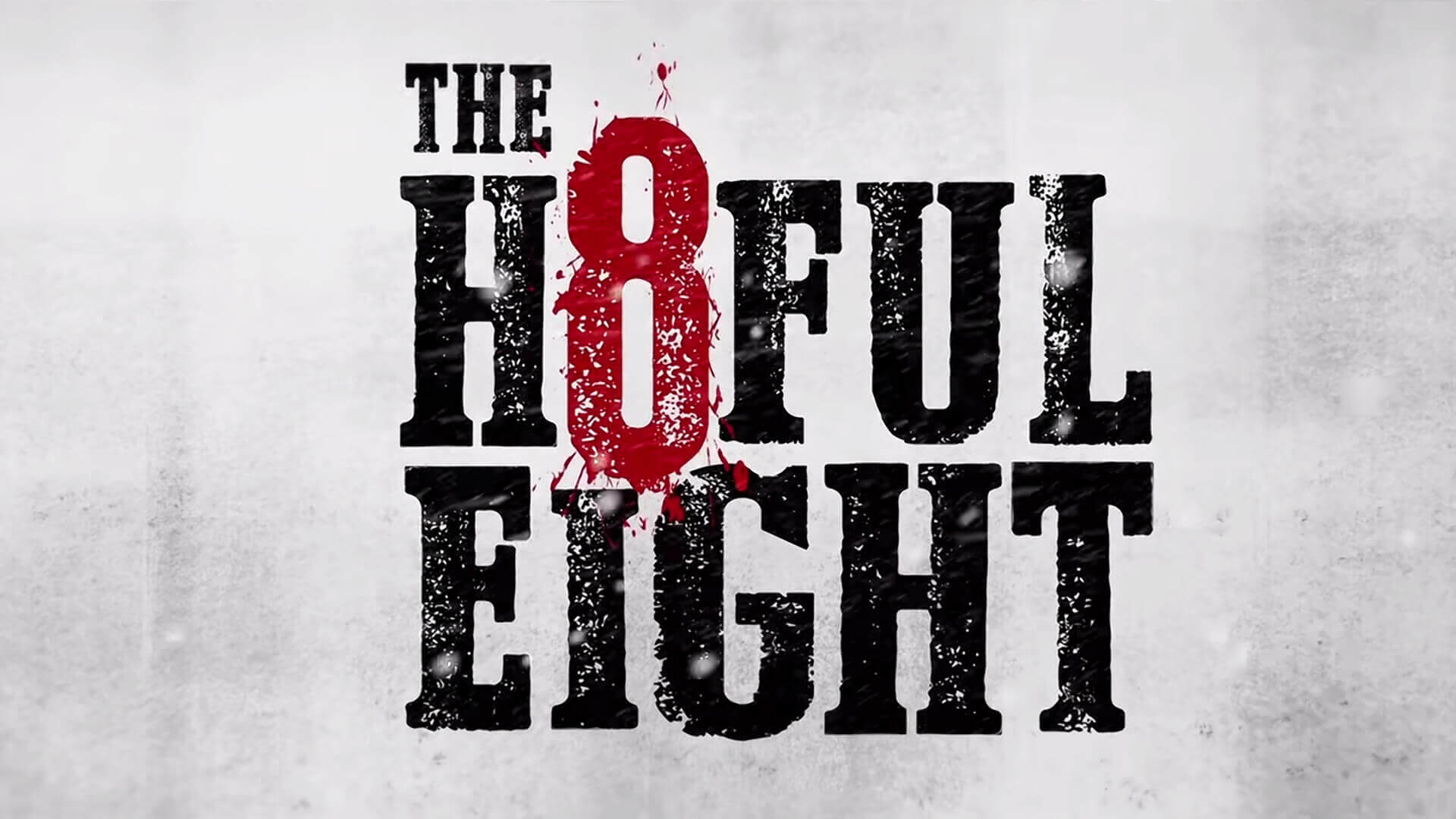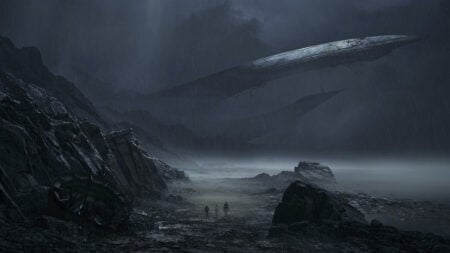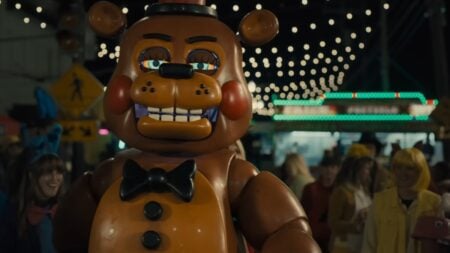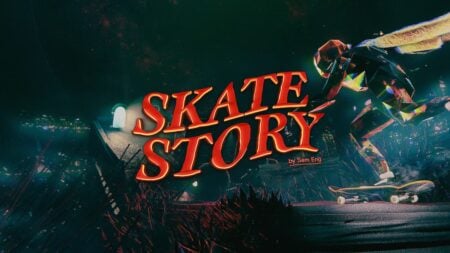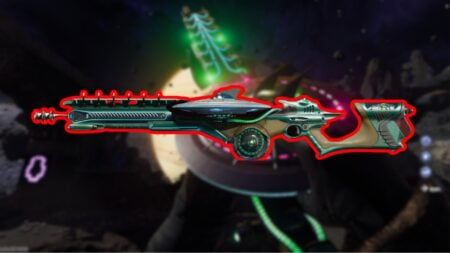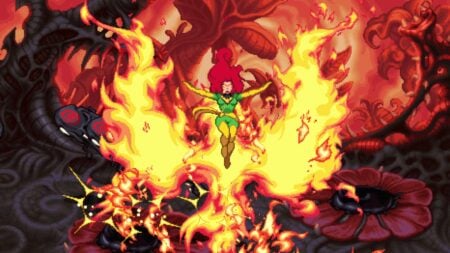Title: The Hateful Eight
Release Date: December 25th
Studio: Weinstein Company
Director: Quentin Tarantino
Release Form: Theatrical
It’s rare nowadays that a blockbuster film will come around and feel as if it’s made for a completely different time frame. From the design, to the structure, to the very essence of the story, The Hateful Eight is a movie that is a clear love letter to the Western classics of old. Many moviegoers may not be prepared for how long and broken up this film is, yet it works almost perfectly; with only the smallest of hitches throughout the almost three-hour runtime. As equal parts western and mystery; The Hateful Eight blends these cinematic elements almost seamlessly. I say almost because the actual structure of the film itself both plays to an advantage and disadvantage at the same time. Director Quentin Tarantino clearly pulls out all the punches, but for long time fans of his previous seven films, some of it may seem a bit familiar.
The Hateful Eight follows the story of bounty hunters Major Marquis Warren (Samuel L. Jackson) and John “The Hangman” Ruth (Kurt Russell) who have become trapped in a small bar dubbed Minnie’s Haberdashery during a blizzard. Along with them and six (technically seven) other patrons, including Ruth’s sadistic prisoner Daisy Domergue (Jennifer Jason Leigh)it becomes clear from the start not everyone is who they say they are. Tarantino does a masterful job at hiding everyone’s true motives, allowing them to unfold more organically and keeping the audience engaged. It’s quite fun to try and figure out who is or isn’t telling the truth; as every actor plays their role to perfection. From the get go it’s easily established that this movie will have many twists and turns, but don’t expect any massive story changing revelations. They are small and subtle for the most part, making you as the viewer decide which lies are acceptable and which are not.
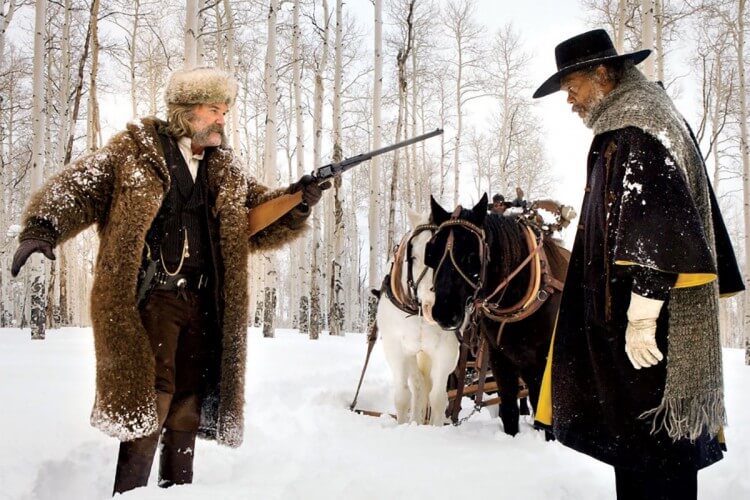
This helps play to the unique characters who, at first glance, fit into the stereotypical roles of Western film archetypes, but quickly develop beyond easily defined tropes. The new sheriff (Walton Goggins) isn’t all wide-eyed and squeaky clean, as his own ideologies give him an unsettling presence. Russell’s grizzled bounty hunter isn’t just a badass, but can be seen as genuinely cruel at times. While the other cast members play their roles to almost perfection, including Tarantino veterans Tim Roth and Michael Madsen, it’s Jennifer Jason Leigh who truly stands out. Giving a possible Oscar worthy performance, Domergue is a delight to watch in all of her sadistic revelries. Clearly the one having the most fun with her role, Leigh helps give the prisoner a true air of danger about her. She doesn’t fall into the femme fatale model that Tarantino’s women usually fall into but just comes off as a cruel and dangerous woman.
For a movie about a bunch of deceitful, mean-spirited and generally insane characters there are a few deeper messages running throughout. As the sole African American character, Marquis Warren’s interactions with the predominately white cast make up for a large portion of the moral arcs. Being set after the Civil War allows for interesting discussions on the relationship of race in America that still resonates with modern times. Tarantino is clearly trying to have a discussion about how blacks have been treated, despite being declared as “equals and free” in the eyes of the law. Characters like the new sheriff, Christ Mannix, first appear to just be another bigoted Confederate, but we slowly get to see his ideologies on the entire matter slowly alter and grow. It’s an interesting thing to see, as a lot of the remarks made by the white cast aren’t too farfetched to be heard from people on this day and age.
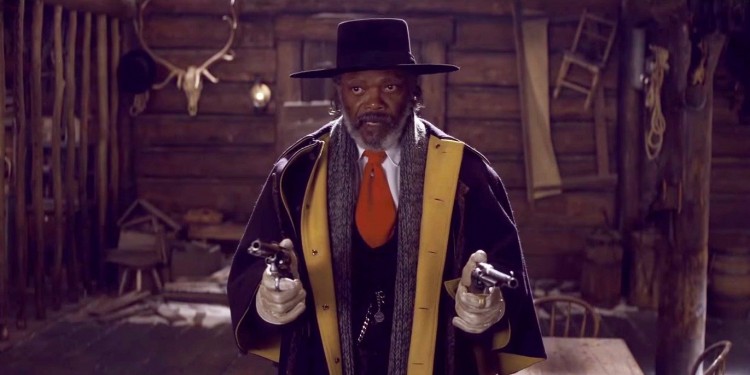
John Ruth’s interactions with his prisoner, Domergue, also comment on violence towards women and if it’s acceptable in certain cases. Ruth is clearly shown throughout to not have a problem with hitting a woman, but Tarantino’s writing only really scratches the surface of this issue. All of this helps The Hateful Eight standout from Tarantino’s other films as this one isn’t as excessively over the top as some of his previous work. Which I realize isn’t saying much as some of the scenes in this film are downright bizarre. The film’s slow burn approach helps keep you on the edge of your seat for the majority of the film as it’s clear there is a lot more at play.
However, the film’s structure itself could be a serious make it or break it moment for some viewers. See, The Hateful Eight was designed to not just be another three-hour long movie, but based off the format of older films that would have roadshows. Essentially, Tarantino broke his film up into chapters so at the middle he would fade to black and give the audience an intermission. This follows more of the traditional Broadway Play, two-act structure; which includes an actual narrator to recap us on what transpired before the curtain came down. This can be jarring without actually receiving an intermission and the narrator then comes off as awkward. I see what Tarantino is trying to do, but sadly films are not shown in this format anymore. Having the film broken up into chapters was not that bad, but when there is a clear design in the film’s formatting to have an intermission is where it falls out of place.
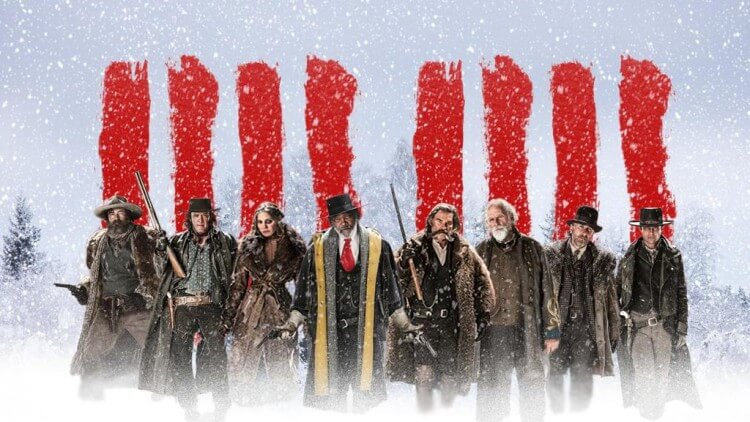
Along with that, Chapter Five (I’m not going to spoil this section) does drag on a bit too long. I get that Tarantino favors long drawn out shots, but the opening of this chapter is just another three to five minutes of just watching horses gallop again. That’s fine for the opening as you’re rolling credits across the screen, but it kills the pacing of the film. Not to mention the outcome of this particular chapter is already known to the audience so the long length of this segment feels like a grind. It could have been trimmed down more as it really doesn’t establish anything aside from one aspect we didn’t already know as viewers.
That being said, both the music and cinematography are absolutely breathtaking. Despite being trapped in a small bar the entire team, Tarantino utilizes almost every bit of space in Minnie’s Haberdashery. The shots are gorgeous and clearly thought out, only enhance more so thanks to the terrific score.There are some serious creative muscles being flexed here, as these elements help lend a bit more character and depth to the entire story. Overall, though, The Hateful Eight is certainly one of the best movies of the year. While I had my gripes with certain structural choices, the film as a whole is incredibly entertaining. From the unique characters to the Tarantino witty dialogue we all expect, The Hateful Eight is a fantastic culmination of every cinematic element. The Hateful Eight brings movies back to a mostly forgotten era of filmmaking and kicks it up to eleven.
[embedyt] https://www.youtube.com/watch?v=6_UI1GzaWv0[/embedyt]
- Acting: Every cast member gives fantastic and memorable performances throughout, but Samuel L. Jackson and Jennifer Jason Lee truly a standout among the rest.
- Cinematography: Beautiful, haunting and clearly well thought out; The Hateful Eight boasts some of the most impressive cinematography of 2015. Coupled with the amazing score and near perfect editing, this film’s design alone is impressive.
- Story: Tarantino keeps the tension and mystery at a slow burn, which helps us connect better with the characters. However, a few structural choices such as the omission of a clearly intended intermission and the length of Chapter 5 do show a few cracks in this nearly three-hour-long movie.
- Characters: Breaking the mold of the traditional character archetypes we have come to expect from Westerns, each one is an interesting play on these familiar tropes. Our main cast is complex and offers more than meets the eye (Couldn’t help myself,) giving us more to invest in during the films progression. Though Demian Bichir’s Bob is a bit too cartoonishly comical for my taste.
[review]

